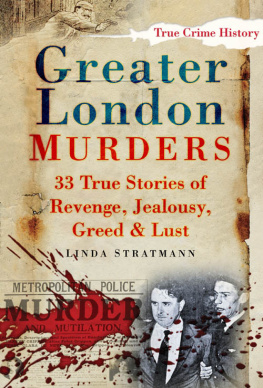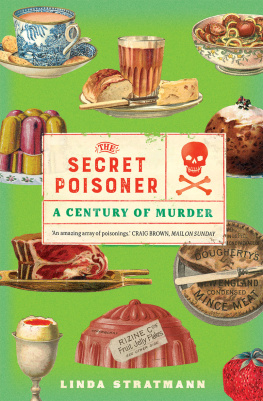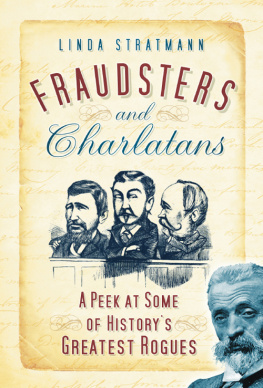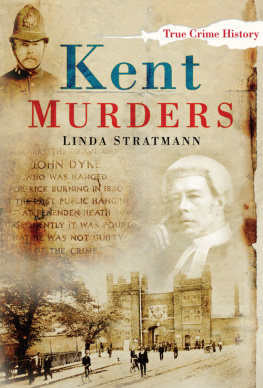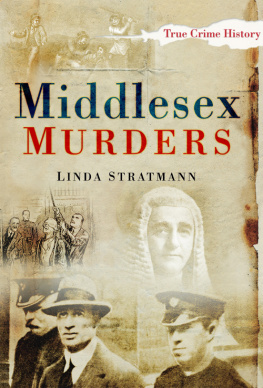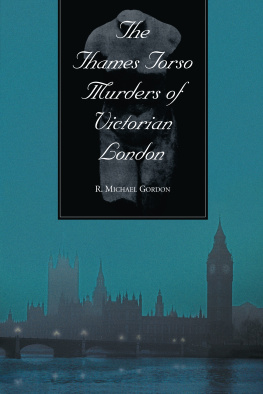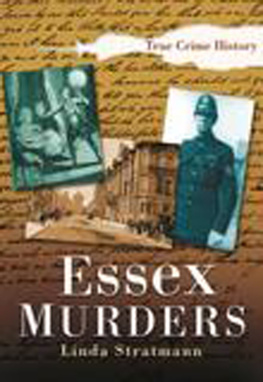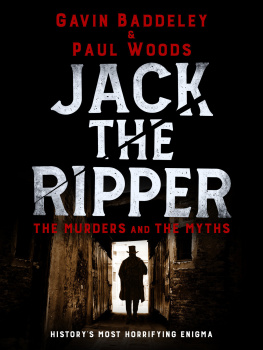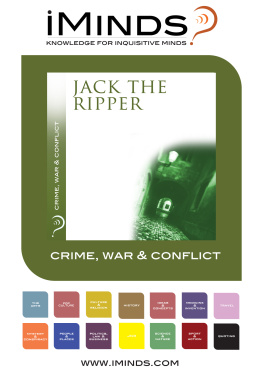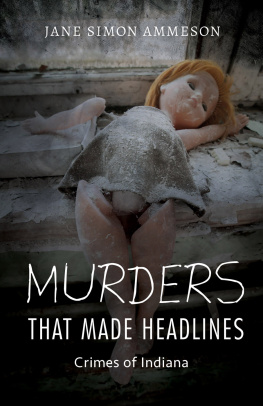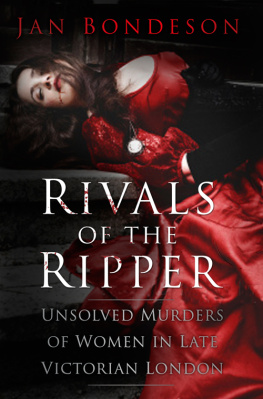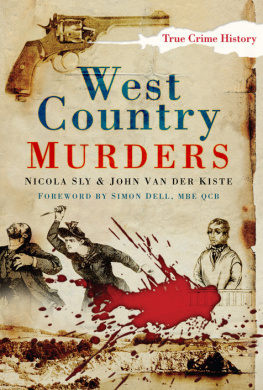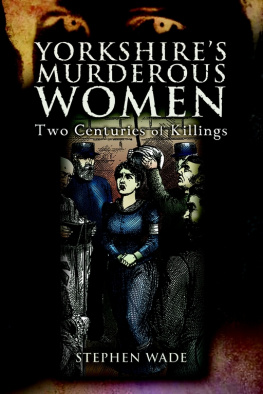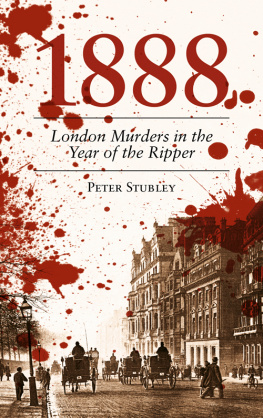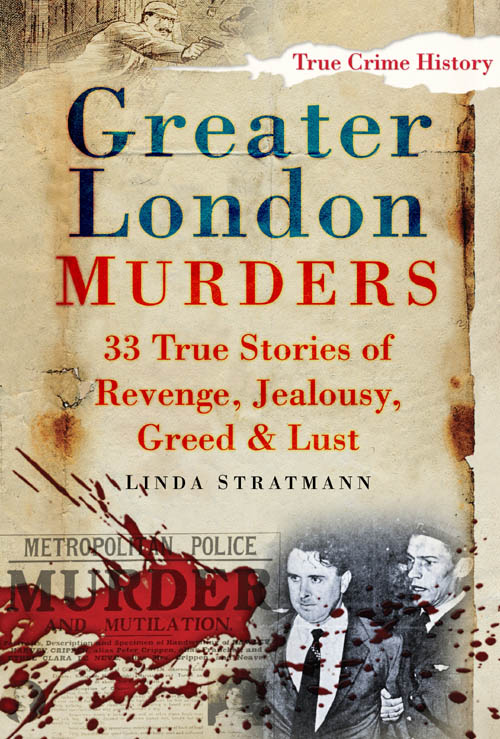Greater
London
MURDERS
Greater
London
MURDERS
33 TRUE STORIES OF REVENGE,
JEALOUSY, GREED & LUST
LINDA STRATMANN

First published 2010
The History Press
The Mill, Brimscombe Port
Stroud, Gloucestershire, GL5 2QG
www.thehistorypress.co.uk
This ebook edition first published in 2012
All rights reserved
Linda Stratmann, 2010, 2012
The right of Linda Stratmann, to be identified as the Author of this work has been asserted in accordance with the Copyrights, Designs and Patents Act 1988.
This ebook is copyright material and must not be copied, reproduced, transferred, distributed, leased, licensed or publicly performed or used in any way except as specifically permitted in writing by the publishers, as allowed under the terms and conditions under which it was purchased or as strictly permitted by applicable copyright law. Any unauthorised distribution or use of this text may be a direct infringement of the authors and publishers rights, and those responsible may be liable in law accordingly.
EPUB ISBN 978 0 7524 8383 2
MOBI ISBN 978 0 7524 8382 5
Original typesetting by The History Press
CONTENTS
AUTHORS NOTE
I would like to thank everyone who has helped me with the preparation of this book, especially the staff of the British Library, Colindale Newspaper Library, the National Archives, and the Newham Local Studies Library. My grateful thanks also to the Metropolitan Police Historical Collection for permission to reproduce some of the pictures in this book.
My thanks are always due to my husband Gary, for his assistance, support and enthusiasm in all my endeavours.
This book is dedicated to my friends in the Forest Writers group, who have listened to my readings with such patience, and made so many helpful and illuminating comments.
For the second edition of this book I am indebted to Jonathan Oates for additional information from his extensive researches into the life of John Reginald Halliday Christie, and to Kenneth Chamberlain for the pictures of Erith Street and Park Spring Terrace.
THE ILLUSTRATIONS
Except where specifically stated, the illustrations in this book are from the authors collection.
ABOUT THE AUTHOR
Linda Stratmann is a freelance writer and editor. She has a long-term interest in true crime and is the author of Chloroform: The Quest for Oblivion, Whiteleys Folly: The Life and Death of a Salesman, The Crooks Who Conned Millions: True Stories of Fraudsters and Charlatans, Notorious Blasted Rascal: Colonel Charteris and the Servant Girls Revenge, Gloucestershire Murders, Essex Murders and Kent Murders. She lives in Walthamstow, London.
1
BARKING AND DAGENHAM

A Fight to the Death

I n the 1840s, Dagenham was a rural village, largely populated by agricultural labourers. With the Thames estuary only two miles away, many men were tempted to supplement their low wages by smuggling. There was no Essex police force, and the area earned a not undeserved reputation for lawlessness. To combat the problem the Metropolitan police force established a small station in Dagenham which was manned by six constables and a sergeant, and provided with a horse. The police soon came into conflict with the criminal elements, and some constables received threats which were taken so seriously that it was decided to transfer the officers in question to other districts.
On 4 March 1846, PC Abia Butfoy was on patrol when he encountered a man he knew to be of bad character, carrying a bag. Suspecting that the bag contained stolen property, he insisted on seeing its contents. The man refused and this resulted in a scuffle. Later the man showed him what was in the bag, but departed with a threat to get even. In mid-May Butfoy was replaced on his beat with another constable, PC George Clark.
Clark had been in the police force only six months, and in Dagenham just six weeks. He was 20 years old, robust and well able to take care of himself, and had already impressed his superiors with his conscientious attention to duty. He was a quiet, good humoured and religious lad, who sang hymns as he walked along and carried tracts in his pocket. He had recently become engaged to be married.
The police patrol began every night at 9 p.m., with Sergeant William Parsons on horseback at the head of his men. At a crossroads known as the Four Wantz, where the roads led to Ilford, Barking, Dagenham and Chigwell, the men parted, setting off on their individual beats. They met up at set points and times during the night, returning to the station at 6 a.m. The lone policeman walking country roads in the hopes of deterring a band of armed cutthroats was poorly equipped. He carried a truncheon and a cutlass, and wore a thick greatcoat done up tightly at the neck with a stout leather stock to protect against being strangled. If attacked, he could alert his colleagues with a wooden rattle.
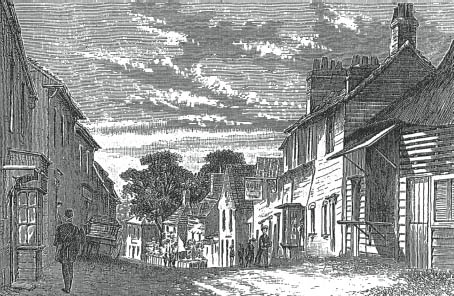
Old Dagenham.
On Monday 29 June the men patrolled as usual, and Clark was at his appointed place at 1 a.m., but two hours later, he was missing. When the men returned to the station, Clark was absent. His colleagues retraced his route but found nothing, and started dragging ponds for a corpse.
On 3 August they reached the farm of Ralph Page and asked his wife, Elizabeth, for permission to drag the pond. Mrs Page remembered that at 3 a.m. on 29 June she had been awoken by the furious barking of dogs. She had thought she heard a distant cry for help, but the barking was so loud that she had not been sure. Once the pond had been dragged Mrs Page said that there was another further on, and sent her two boys to show constables Butfoy and Thomas Kimpton where it was. In a field a quarter of a mile from the main road, they became aware of a strong smell. Kimpton found a policemans staff, bloodstained and very much cut about, and immediately recognised it as Clarks. A little further on he found Clarks cutlass, stuck in a hedge, and when it was withdrawn it was seen to be covered in blood, with human hair sticking to it. Half a dozen yards further on was the body of George Clark, and even after the previous two discoveries the two policemen could not have been prepared for the ghastly appearance of the corpse. Here he lies! called Butfoy, while the children screamed so loudly their mother could hear them back at the farmhouse. Kimpton was too appalled to speak and Butfoy, who had a stronger stomach, added, you are a pretty cow-hearted sort of a policeman. They called for Sergeant Parsons and PC Stevens, who were in the adjoining field. Stevens took one look at the body and fell back in a dead faint.
Clark was lying on his back, one hand tightly grasping a handful of wheat in the last spasm of death. There had been a fierce struggle, for the crops were trodden down for ten or twelve yards in every direction. The face and hands of the corpse were covered with blood and dirt. The wounds were appalling. There was a large opening in the back of the skull some six to eight inches in circumference. Part of the scalp had been cut off, probably with the cutlass, and was lying beside the body.

